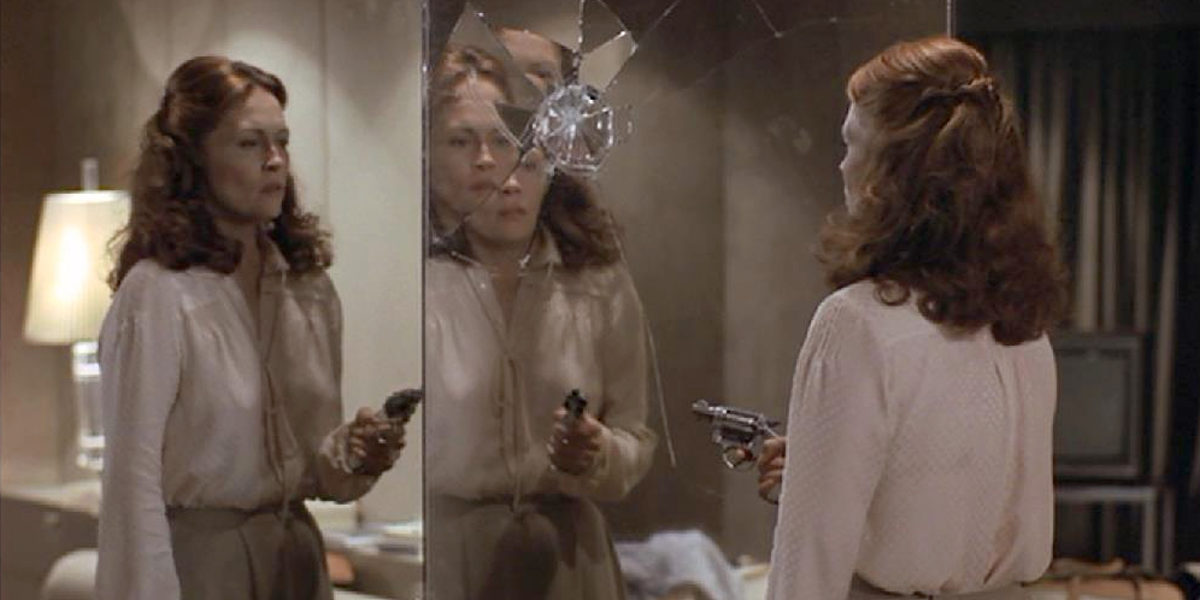Faye Dunaway and Tommy Lee Jones Must Stop a Serial Killer in the NYC Fashion World
DIRECTED BY IRVIN KERSHNER/1978
BLU-RAY STREET DATE: OCTOBER 18, 2022/KL STUDIO CLASSICS
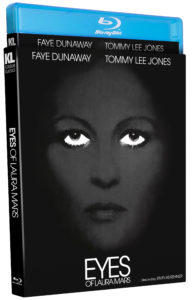
The notion of “American giallo” is a fascinating thing. In this self-proclaimed “land of the free” we love our whodunnits and (on a baser level) our disturbing serial killer cases. Mix in sex and we begin to get skittish. Kick logic to the back burner and we begin to get lost en masse. Still though, the allure of the camera’s eye has a way of penetrating our willingness to suspend disbelief…
In the latter end of the 1970s, the very American, very ambitious film producer Jon Peters, armed initially with only a screenplay called “Eyes” by a pre-fame John Carpenter, managed too eke out a high-profile domestically generated giallo. Whether he himself was aware that that was what he was committing to cook up is unknown at this juncture. What he saw in it was a bold star turn for his then-girlfriend, singer and occasional actress Barbra Streisand. (“Barbra StreiSAND. Like ‘sands’… Barbra StreiSAND”).
The initial lurid Italian murder mystery subset of “giallo” is mired in (debatable) tropes that quantify its films. High on any such list is the exploitation the black-gloved killer’s point of view, most commonly as a female is stalked for stabbing. Heightened gore and frequent misogyny are reliable elements. Oneiric twistedness outweighs tight plotting. Mental illness is commonly demonized as death comes wielding the sharpest of blades. The threat of broken glass isn’t mandatory, but Dario Argento has made such effective use of it throughout his giallo-highlighted oeuvre that it’s no misstep to include it.
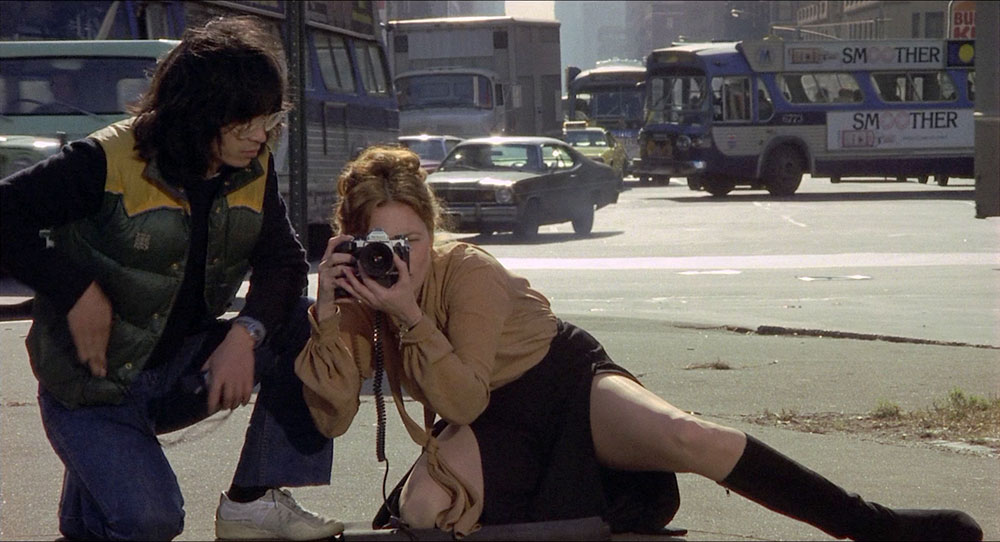
Eyes of Laura Mars gets at all of these things, though it gets at them haphazardly and quite likely with some level of ignorance. If not arrogance. Streisand had the good sense to reject starring as the wildly conflicted film’s titular protagonist, although she did contribute the prominent earwormy original song, “Love Theme (Prisoner)”. Peters, backed by Columbia Pictures, got Faye Dunaway, hot on the heels of her Oscar win for Network, to star instead. Dunaway proves to be entirely sufficient in the role of Laura Mars, The World’s Most Famous Fashion Photographer. Mars’ work (actually realized by no less than the controversial Helmut Newton, who also advised on the sexy-but-unsexy photo shoot scenes) is bombastic, confrontational, sexual, and exuding soullessness. (In a word, “giallo”). When a police detective with a persnickety moral compass, Lt. John Neville (a shaggy Tommy Lee Jones), turns up at her gala NYC opening, Mars finds herself a suspected murderer.
Except, that’s impossible. Although it’s remarkable how her meticulously staged manslaughter/fashion depictions are revealed to be tableaus of real crime scenes (shared poses, wounds, and even set dressing), Mars is quickly ruled out as a possible killer per a verifiable timetable that puts her across town from the most recent. We quickly learn that from time to time, she is overcome by graphic visions of killings from the killer’s perspective. While that explains her uncanny photo portfolio, she is only now realizing that the images she’s left with are in fact grounded in reality. She puts this to the test when the next one hits- an acquaintance, no less- dashing on foot through New York City to stop it. Arriving too late but nonetheless hysterically describing what’s just happened in perfect detail, the police are at a loss on what to do with her.
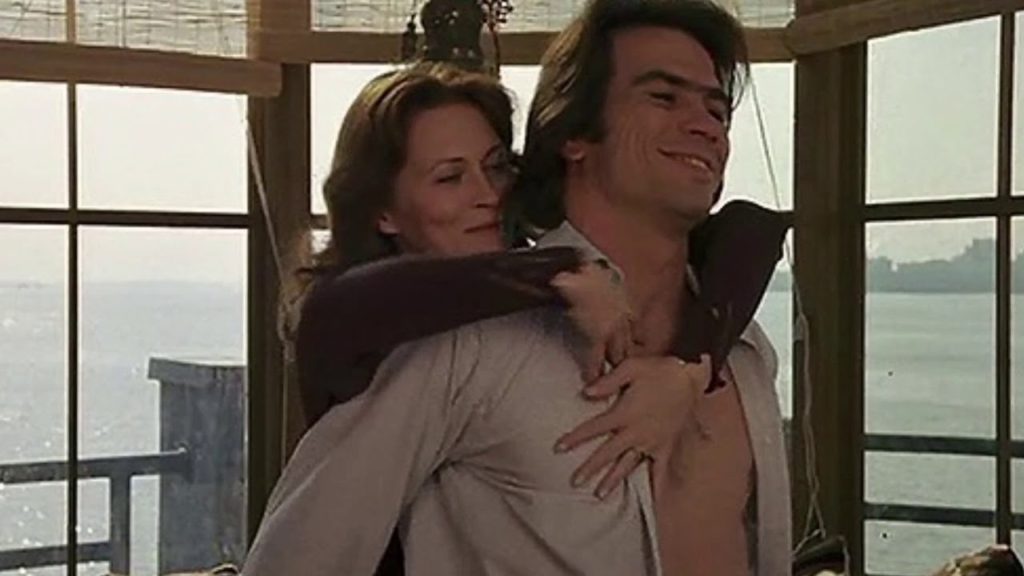
The middle of Eyes of Laura Mars drifts into doldrums of disco music and frustrated characters amid further fashion-world homicide. Laura Mars and Lt. Neville fall in love. The crowded stable of well-established suspects (a great cast, including Rene Auberjonoisis, Brad Dourif, Raúl Juliá, and Frank Adonis) is inevitably thinned as the film goes on.
Director Irvin Kershner (The Empire Strikes Back) is said to have infused the film with the entire fashion photography angle. Supposedly he didn’t care for the screenplay, although who knows whether it was Carpenter’s written-on-spec original, the credited rewrite by David Zelag Goodman, or one of the other uncredited rewrites (including Joan Tewkesbury of Nashville fame). In any case, the resulting film gives the distinct impression that when the final draft hit the desk of the producer, the resulting cloud of cocaine dust that was kicked up settled onto the pages for good. The resulting “gossamer gowns” aesthetic of indulged decadence/criticized decadence only adds to the push-pull time capsule nature of this large-scale, glossy/hazy effort. At the time, MAD Magazine’s parody, “Eyes of Lurid Mess” might’ve been better received than its source material.
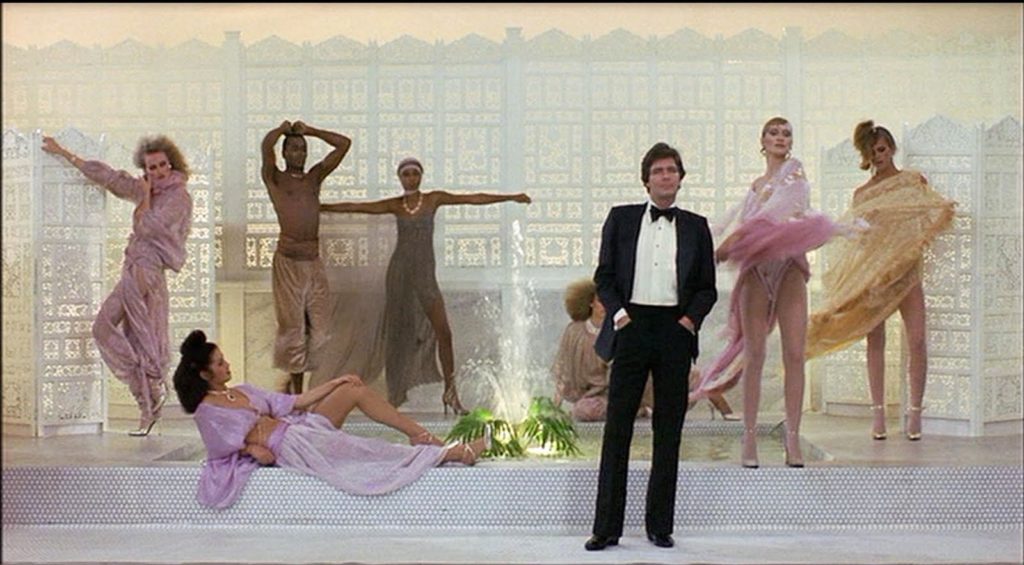
KL Studio Classics’ new slipcovered “special edition” Blu-ray release of Eyes of Laura Mars offers more bonus features than the label usually provides, though all appear to be ported over from an older DVD edition. Kershner, who became one with The Force back in 2010, has a feature-length commentary. While the entirety of this track didn’t prove engaging enough to complete, the first and last twenty-plus minutes offer little more than the director’s glorified narration of what’s on screen. There’s an interesting short piece called Visions (7:26), which is a making-of featurette from 1978.
Also, in standard definition is a short piece (8:25) titled Eyes of Laura Mars Photography, a slide show of the film’s custom photos and more that is accompanied with commentary by the old DVD’s producer, Laurent Bouzereau. Bouzereau takes the opportunity to expound upon some of the changes the screenplay went through. Although he expresses his great gratitude to Kershner for recording a commentary, this seems to be an effort to appease fans who were hoping for more from the director. Rounding it out are three vintage TV spots, a radio spot, and the theatrical trailer. The film itself appears well represented in high definition on this disc. Probably not an easy task considering its intentionally clouded “1970s” look.
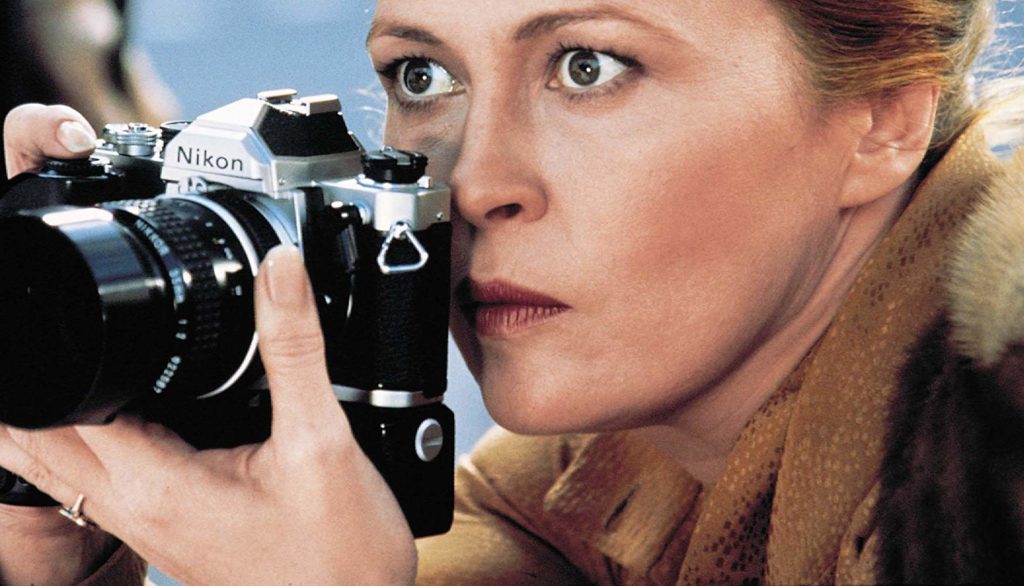
Is Laura Mars still so well known? It seems that the film, once a focal point of morbid fascination and a critical punching bag, eventually faded like a hangover. All the key talent managed to land on their feet. Knowing how John Carpenter loved to explore the far reaches of foreign genre cinema, sometimes unabashedly bringing influences home (see: Big Trouble in Little China for an American wuxia far before its Crouching Tiger cultural moment in the west) to intrigue and confound. The clash of sensibilities going on behind Eyes of Laura Mars can be quickly detected even without any knowledge of production specifics.
Eventually, Eyes of Laura Mars comes to its shattering conclusion. Feel free to equate the frequent shots of the glass camera lens as it takes in her warped staged visions. And then take it further with notions of Kershner’s camera’s lens. None is invalid analysis. All, for what it’s worth, is in keeping with the spirit of giallo cinema- as is the film’s all-in outlandishness (which the actors navigate admirably). And isn’t that type of commitment a vital aspect of the American dream… even when it’s impossible to deduce who’s dream it is? Does that make us, the viewer… a prisoner? (Cue Streisand). Eyes of Laura Mars may not focus well on much, but it is without question a thoroughly American giallo.


